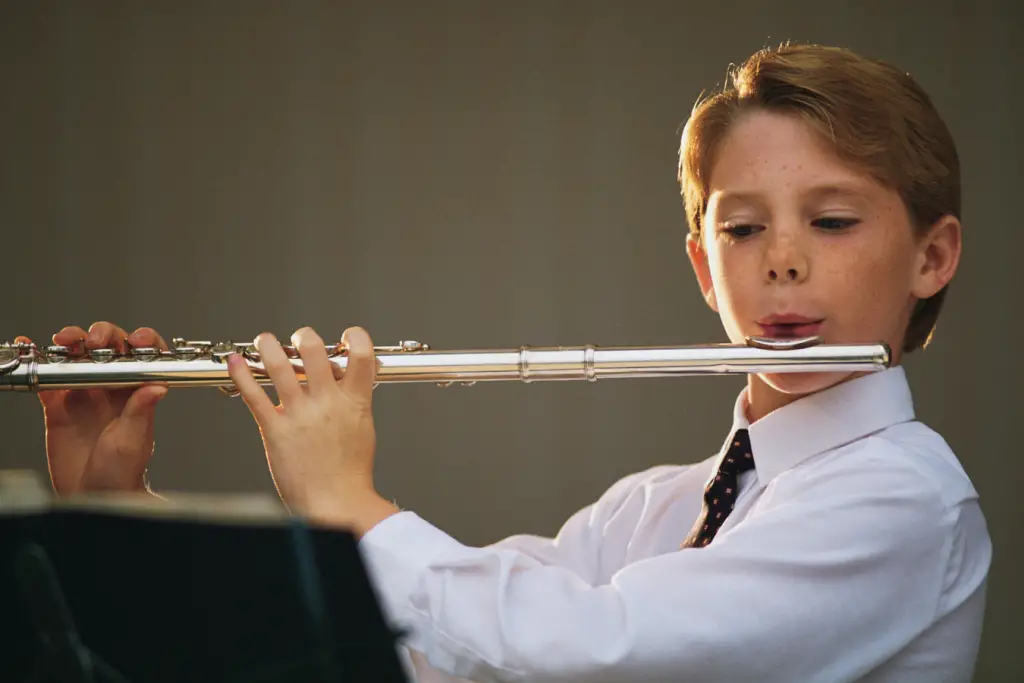For flute players, mastering the correct embouchure is essential for producing a clear and resonant tone. The correct flute embouchure involves shaping the lips and facial muscles in a way that directs the air stream efficiently into the flute. This precision in positioning can significantly impact the tone quality of the instrument. Without a well-formed embouchure, even the most experienced flutists may struggle to achieve their desired sound.
The journey to a perfect embouchure requires practice and awareness. Understanding common mistakes, like the “smiling embouchure,” can help players avoid issues that sabotage sound quality. This involves adjusting the length and angle of the air stream and ensuring the flute remains anchored properly under the bottom lip. Achieving good tone quality entails more than just correct lip placement; it also requires ample air support and good posture.
Flute players must also consider the alignment of the embouchure hole with the flute’s keys. Proper alignment aids in producing a consistent sound across different registers. Balancing these elements can help flutists unlock their potential and express their musicality effectively. Whether beginners or advanced, players must invest time in refining their embouchure to realize their instrument’s full capabilities.
Fundamentals of Flute Embouchure
Mastering flute embouchure involves understanding the intricacies of lip shape and position. Below, the formation of the mouth and the positioning of the lips relative to the flute are discussed in order to achieve the best sound quality and control.
Embouchure Formation and Mouth Shape
The formation of a proper flute embouchure begins with shaping the lips and adjusting facial muscles. Lip flexibility is critical here. The lips should form a relaxed yet controlled oval shape. Avoid a tight or tense mouth, which can hinder sound production. Instead, they should feel at ease, allowing for the air to flow smoothly.
The “smiling embouchure,” where the lips are pulled back as though smiling, should be avoided. This can stretch and lock muscles, creating tension and issues with pitch. Instead, the lips should be slightly puckered, positioned softly against the lip plate. This positioning helps in controlling the aperture size, allowing for varied tonal expressions.
Embouchure Hole and Lip Position
Correct alignment of the lips with the embouchure hole significantly affects the sound. The lower lip should extend slightly over the hole, creating a stable anchor for the flute against the chin. This ensures a firm placement without excessive pressure, maintaining freedom in the lips for sound modulation.
The air stream should be directed at the outer edge of the embouchure hole. Approximately 60% of the air should be directed into the flute, aiding in producing a full, rich tone. Proper lip position helps ensure that the flow of air is steady and consistent, crucial for achieving a balanced sound. The angle at which the air stream hits the embouchure hole is vital for controlling pitch and achieving clear intonation.
Breath Control and Air Management
Effective breath control and air management are essential for producing a clear and resonant flute tone. Proper air support and controlling air speed can significantly influence the dynamics and quality of sound production.
Air Support and Air Pressure
Air support plays a crucial role in breath control, influencing the flute tone and dynamics. The flutist needs to manage their breath support by engaging their diaphragm and intercostal muscles.
Maintaining consistent air pressure ensures a steady tone without fluctuations in volume. It’s important to develop the ability to adjust air pressure for different musical phrases to enhance expression and sound quality.
Exercises that focus on controlled breathing can help flutists gain better control of their air pressure, leading to improved tone production. Consistent practice in this area helps refine their understanding of how to manipulate airflow for optimal sound.
Air Stream and Speed for Sound Production
A precise air stream, directed correctly across the embouchure hole, is necessary for effective sound production in flute playing. The speed and angle of the air stream determine the clarity and resonance of the produced sound.
Control over the air speed allows flutists to create a range of dynamics and tonal colors. Adjustments in the air stream can lead to variations in the sound, affecting both volume and pitch.
Practicing techniques to control the air stream’s speed and direction will aid in developing a more stable and consistent flute technique. Regular exercises focusing on these aspects will enhance a flutist’s ability to produce clear and balanced tones consistently.
Advanced Embouchure Techniques
Advanced embouchure techniques are essential for flutists aiming to enhance sound quality and precision. These techniques help in achieving greater control over articulation and dynamics, while also addressing common challenges like air leaks and intonation issues.
Articulation and Dynamics
Mastering articulation and dynamics requires the flutist to develop embouchure flexibility. This flexibility allows for precise changes in air direction and pressure, crucial for transitioning across different registers. Techniques focusing on muscle memory can aid in producing clean articulations by remaining consistent with tongue placement and movement.
Dynamic control involves careful modulation of air speed and pressure, enabling the flutist to vary volume without sacrificing sound quality. Experimenting with embouchure adjustments can help in achieving the desired musicality and tonal variation.
Troubleshooting Common Issues
Flutists often encounter issues like air leaks and pitch inconsistencies. Addressing these problems involves refining the embouchure to create a seamless seal between the lips and the flute’s lip plate. A firm yet relaxed position for the lips ensures better intonation.
When dealing with air leaks, checking the alignment of the flute and lip position is vital. Using a mirror can help identify gaps and improve precision. Intonation problems can be minimized by subtle adjustments in embouchure shape and by focusing on stable airflow, allowing the creation of a more consistent pitch across all registers.

